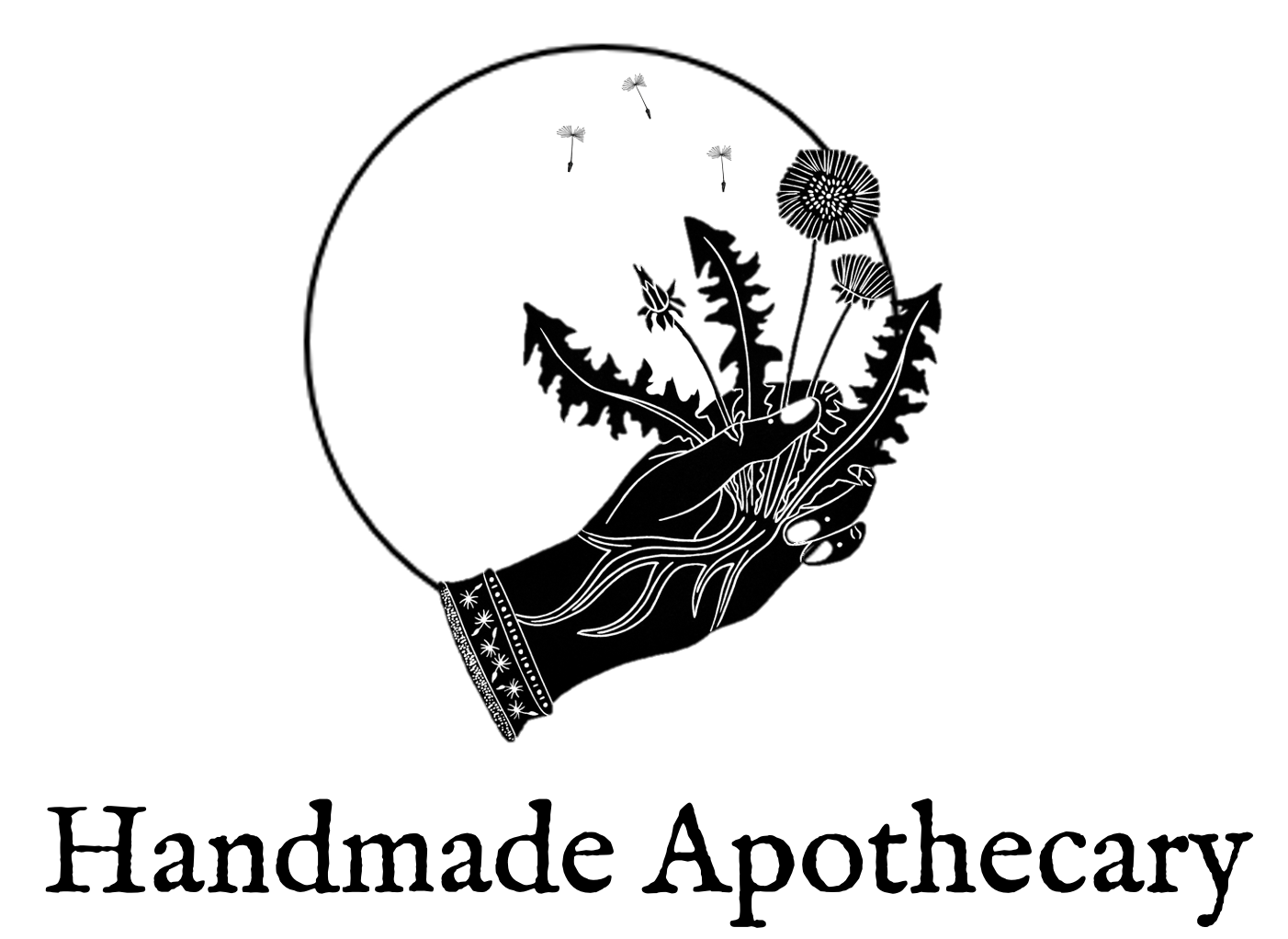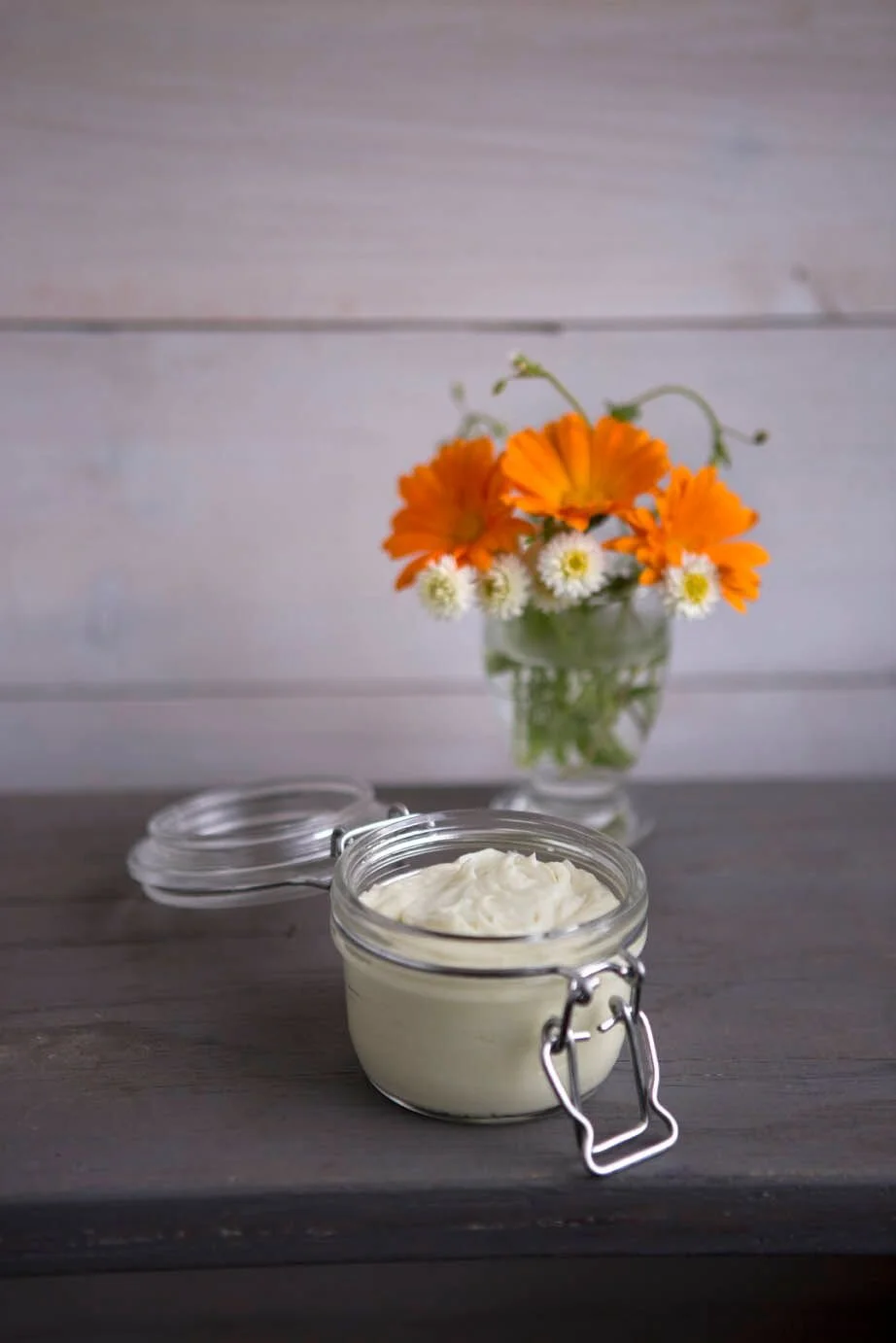How to make herbal creams: Part 1
There are thousands of cream and lotion recipes on the internet. It may seem overwhelming knowing where to start.
A simple cream. Image from The Handmade Apothecary book (C) Kyle Books 2019.
This article will help you understand the basics, and we give a recipe on the next page. We aim to give information at a level suitable for making simple herbal creams at home.
What is a cream?
The first step to understanding cream making is realising that every single recipe you see online will have a basic formula:
Water part + oil part + emulsifier = cream
The chemistry of cream making
Also see glossary at bottom for an overview of terminology.
Oil and water don’t mix. If you place a teaspoon of oil on top of a glass of water, the oil will float.
This is because oil and water molecules repel each other. The water molecules are lipophobic (lipo=oil, phobic=hating)and the oil molecules are hydrophobic (hydro=water, phobic=hating).
Have you ever soaked a greasy oven dish? When you pour the hot water in, oil floats to the top. But have you noticed when you add a little dish soap, the oil seems to suddenly disappear? It has been dispersed through the water.
The soap acts as a surfactant. A surfactant is a molecule that breaks surface tension. They do this because they are ampiphilic which loves (attracts) both water and oil. In a way, the soap acts as a ‘matchmaker’ and allows the oil to disperse through the water which then makes pots easier to clean.
Surfactants are needed to blend oil and water together to make an emulsion (a solution of two suspended liquids). In the case of washing the dishes, the surfactant is the detergent (soap). In the case of cream making, the surfactant you need is called an emulsifier.
Two basic types of cream
So we have seen that cream is made with oil and water mixed together with an emulsifier. In reality, the oil and water don’t truly mix together. Instead, the emulsifier allows minute droplets of each liquid to be suspended equally across the mixture.
There are two basic types of creams and emulsifiers.
Left: Oil-in-water cream, a water base with oil particles in suspension
Right: Water-in oil cream, an oil base with water particles in suspension
Oil-in-water creams are water based with oil particles suspended/emulsified into it. This type of cream is light and is more easily absorbed into the skin. Face and body creams are usually water-in-oil creams.
Water-in-oil creams have an oil base with water particles suspended/emulsified into it. They are thicker, oilier and used for deeper moisturising or protection. Examples include barrier cream and cold cream.
What is an emulsifying wax?
Emulsifiers in cream making most often come in the form of emulsifying waxes. They are small white, wax-like pellets, though some emulsifiers are sold as a liquids.
The waxes are usually made from a blend of alcohols and fatty acids (from plant-based, animal and mineral/petroleum-based sources) synthesised in a laboratory. They are hard to make at home from scratch.*
They are an essential ingredient in making nicely textured, light creams.
Types of emulsifying wax
Unless you are going into the cosmetics industry or want to make products for sale, we recommend you keep things simple and choose a basic type simply sold as emulsifying wax from a cosmetics supplier, you can find many on eBay.
If you are vegan, check the ingredients as sometimes the fatty acids are derived from animal sources. Some people may also want to avoid ones that use palm oil.
Here at Handmade Apothecary, we generally use ones that are commonly found in the UK:
Polysorbate 20
Cetearyl alcohol
We buy ours from Naturally Thinking (non-affiliated, we just like their range).
If you do want to get geeky, we recommend this link here for the science behind emulsifiers, and Humblebee&me for descriptions of different waxes.
How to make a cream: recipe
For our basic herbal cream recipe with a vegan alternative as well as a section on troubleshooting. To read about these, click the button below:
Glossary
Surfactant: A substance that breaks the tension between two substances, in this case, water and oil
Emulsifier: a substance that stabilises an emulsion
Emulsion: A solution of fine particles of one liquid suspended in another liquid type where normally the two liquids would not mix
Ampiphilic: A molecule that has both hydro- and lipophilic properties. It is both water and oil loving (attracting)
Hydrophilic: Water loving (attracting), able to be dissolved by water
Hydrophobic: Water hating (repelling), not dissolvable in water
Lipophilic: Oil loving (attracting), able to be dissolved in oil
Lipophobic: Oil hating (repelling), not dissolvable in oil
*How to make emulsifying wax at home
You can make your own emulsifying wax at home but you need quite a few ingredients, including borax which you can’t buy in the UK. The chemical sold as borax substitute has not worked for us in the past.
For your interest, there is a recipe for emulsifier here.



